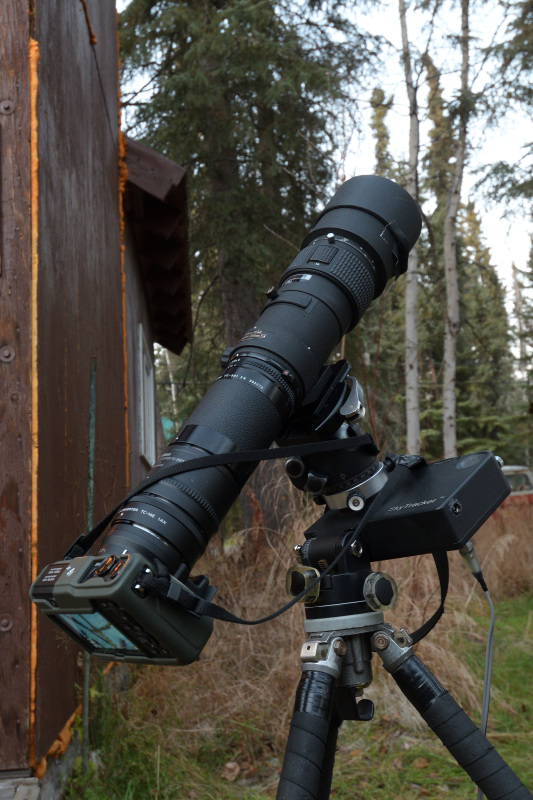Good catch with the stripes on Jupiter, Nasos!
Finally I got the stack to work on Mars. - that is in a double sense, as I found that stacking a 1.4x TC and 2x TC gave the best results with my 300mm lenses on the AW1. This is a game of getting enough pixels on the target. AW1 was released in bursts of 29 frames filling the buffer at 15 frames per second with my pneumatic remote release. I had the rig set up on my tracker to help following the planet, but only pointed the tracker in a very approximate direction of true north as Polaris was hidden by trees at my locations. With best practice it would take 10-15 min to fill a 16GB card with 1580 images. Images were centered and cropped in PIPP, then stacked in AutoStakkert with 3x drizzle, typically using 15-30% of the frames, sharped with wavelets Registax, edited for contrast and brightness, and then had final edits and resize applied in CNX2. For animated GIFs, they had another trip through PIPP after straightening to keep them centered.
First out is at closet distance of Mars October 5-6. Since I did not have a 2x TC for my 300PF, my AF300mm f.4 ED had to do, one stop down with TC-301 and TC-14E stacked. For this to happen I had to remove the baffle of TC-301. These were takes at about 1/2 hour intervals.
#1-3

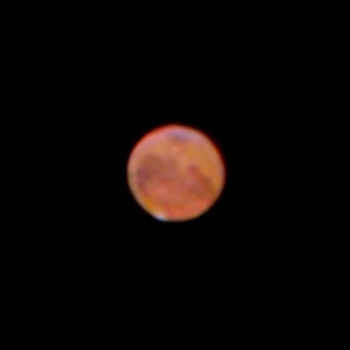

Both the south pole and north pole polar caps are visible, possibly with some CO2 clouds over the north pole.
Then a few days later, October 9, a bargain grade TC-20E III arrived from KEH (I figured that if it had been used long enough to get scuff marks, it could not be a dud). TC-20EII was mounted closest to the 300mm f/4 PF and stopped down 1/3 to 2/3 stop. The protruding front of the TC-14E fits nicely into the rear opening of the TC-20E III. These are the first successful stacks I made, and I had a blast when I found that I could resolve these details on the planet:
#4

#5
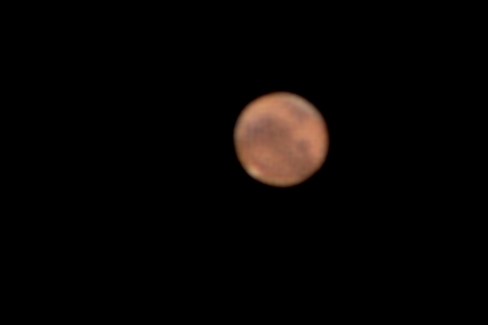
#6

#7
The combination with 300PF gave a lot less bothersome longitudinal chromatic aberrations than the first combination.
I also had a go October 14 near the time Mars opposition to the sun when clouds lifted late at night:
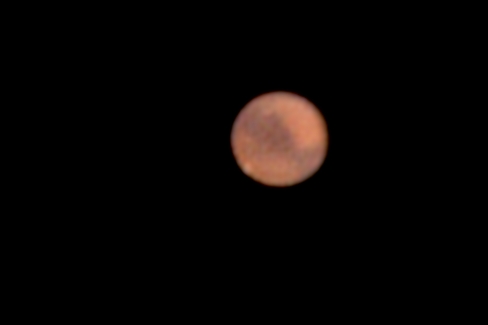
Mars rotates with a period of 24.6 hours, so an issue in these takes is movement from rotation. The most common method of planet imaging is to use high speed video and capture about 12K frames in about 5 minutes for one single take. But with the low resolution om my setup 10-15 minute did not appear to be a problem, although two of the frames in the GIF below is taken at 10 min interval and movement is detectable:
October 5-6 animated GIF:

October 9 animated GIF:
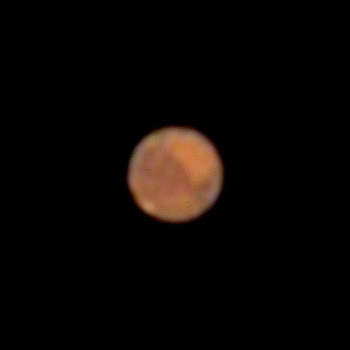
October 17 animated GIF, results were poorer, possibly due to light cloud cover and worse seeing, but the general surface features appear:
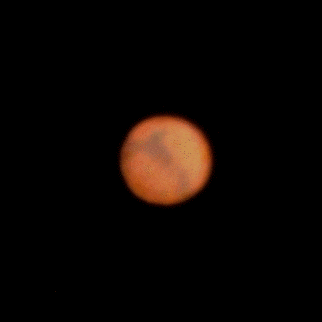
In all this, TC stacking mania took overhand, so I had to try TC14E, TC-20E III and TC-301 all stacked together. Well, everything has a limit, and the effective aperture gets so small that I have not even dared to calculate it - here is the result:
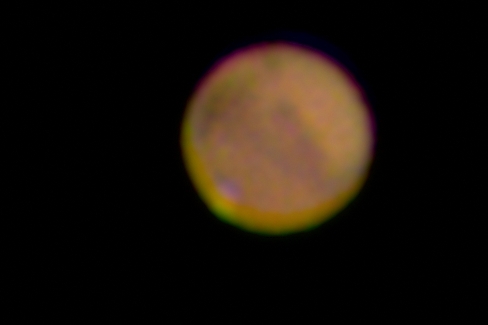
And the crazy stacked rig:
